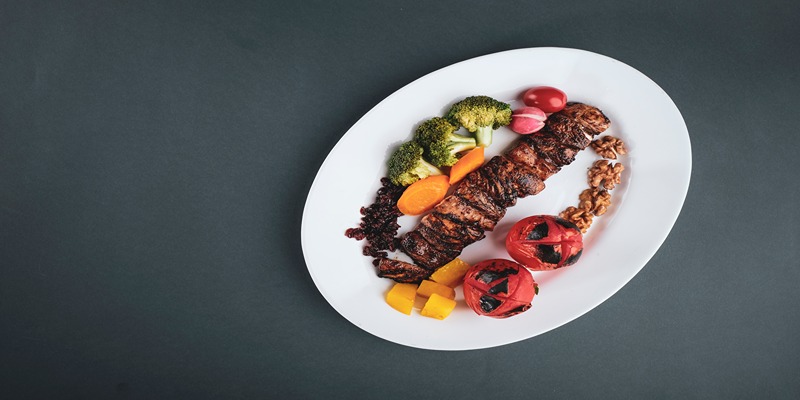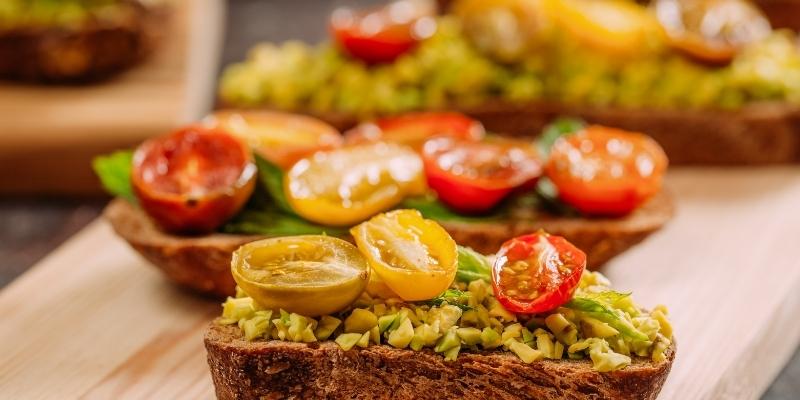A lot of people are turning to the ketogenic diet as a way to lose weight and improve their health. Ketones, which the liver makes when fat is broken down, will replace glucose as the main energy source in the body if you follow this high-fat, low-carbohydrate diet. Ketosis is a metabolic state that the body enters when carbohydrate consumption is drastically reduced and fat intake is increased. The ketogenic diet offers several health advantages, including weight reduction, increased energy, better regulation of blood sugar, and sharper mental focus. In addition to helping with calorie restriction and long-term weight management, many people report less cravings and a fuller sensation after eating less.

Understanding the Keto Diet
A distinct set of guidelines and objectives govern the ketogenic diet. Inducing ketosis, a metabolic state in which fats rather than carbs are the principal fuel source for the body, is its primary goal. Intentionally limiting carbs to 50 grams of net carbs per day is one way this diet accomplishes this goal. The body's glycogen reserves, the principal type of glucose storage, are depleted by this severe carbohydrate restriction. The liver starts to make ketones, an alternate energy source, when glycogen levels fall.
A large portion of the calories consumed on the ketogenic diet (about 70–80%) come from fats. Avocados, almonds, seeds, and olive oil are some of the healthy fats that are essential to this diet. Protein accounts for around 20-25% of daily calories, which is a decent quantity.
There may be a number of physiological changes that occur when the body adjusts to using ketones for energy. Reduced insulin levels, for example, promote fat oxidation and subsequent weight reduction. Calorie restriction becomes simpler for many people when they also report less hunger and more mental clarity. In order to fully benefit from the ketogenic diet, it is essential to understand how the body responds to this change in energy metabolism.
Keto Diet Meal Plan
If you want to be successful on the ketogenic diet, you need to make a 7-day plan. A low-carb, high-fat diet is the cornerstone of the ketogenic lifestyle. An example meal plan is provided below to help you get started: Starting off the first day right is a breakfast of almonds and scrambled eggs made with coconut oil, spinach, and feta cheese. On Day 2, for lunch, you'll have grilled chicken breast, steamed broccoli, and olive oil. As a snack, you'll have celery sticks with cream cheese. Asparagus and baked salmon in a garlic and herb butter sauce are the main courses of Day 3, and a side of chia seed-topped Greek yogurt is the perfect snack. On day four, you'll have an omelet with avocado and bacon for breakfast, and then for snack, have some sliced cucumber and hummus. On Day 5, for lunch, you'll have a salad of mixed greens and spinach with grilled prawns, drizzled with a dressing made of olive oil and vinegar. To round it all off, you'll have a snack of mixed nuts. The sixth day's supper is a stir-fry of beef and low-carb veggies cooked in coconut aminos and sesame oil. Snack time is followed by cheese slices. On the last day, you'll have a keto-friendly smoothie made with almond milk, spinach, protein powder, and almond butter. When you're hungry, snack on some cherry tomatoes topped with mozzarella cheese. To make the ketogenic diet work for you, customize these meal plans according to your tastes and nutritional requirements, but be sure to include plenty of healthy fats, lean meats, and non-starchy veggies.
Essential Keto Food List
Must-Have Foods for a Keto Diet
Make sure to stock up on keto-friendly staples while stocking your keto pantry. An essential component that supplies your body with fuel are healthy fats, such as coconut oil and olive oil. Consume grass-fed beef, fowl, fatty fish (salmon, for example), and eggs as a source of high-quality protein to aid in muscle repair and development. For a boost of fiber and essential nutrients, load up on low-carb veggies like bell peppers, broccoli, cauliflower, zucchini, and leafy greens. Some keto-friendly dairy items are Greek yogurt, cheese, and butter. Also, to bring some sweetness on occasion, use keto-approved sweeteners like erythritol or stevia sparingly. To keep your meals delicious and pleasurable, season them with a variety of herbs and spices.

Foods to Avoid on Keto
It is essential to find and remove goods that do not fit the ketogenic diet when constructing your keto pantry. Avoid sugary meals and beverages like candy, pastries, and soda if you want to stay in ketosis. Keep grains like cereal, bread, pasta, and rice out of your cabinet since they are heavy in carbs. Not only are beans and lentils high in carbs, but they are also off-limits to those on the ketogenic diet. In order to keep your carb consumption modest, you should restrict or avoid starchy vegetables such as potatoes, maize and peas. Reduce your intake of processed foods since they often have hidden sugars and carbohydrates. Be wary of adding extra carbs to your diet with high-carb sauces, such as ketchup, BBQ sauce, and the majority of store-bought dressings. You can make sure that your keto pantry helps you achieve your nutritional objectives and maintain your ketogenic lifestyle by being aware of certain items to avoid.
Tips for Success on the Keto Diet
Strategic preparation and adherence to key guide lines are necessary for success on the ketogenic diet. If you're on a ketogenic diet, here are some helpful tips to keep you on track. Make sure you don't go over your daily carb limit—usually between 20 and 50 grams of net carbs—by carefully monitoring your macronutrient consumption. To track your progress, use a meal diary or a smartphone app. The second point is that meal preparation has the potential to rock the boat. Avoid reaching for high-carb alternatives by planning your meals ahead of time, batch-cooking keto-friendly items, and keeping low-carb snacks on hand. Additionally, since the ketogenic diet may cause electrolyte imbalances and increased water loss, it is important to restore electrolytes and keep hydrated. Finally, think about doing out regularly to supplement your ketogenic diet and improve your general health.
Conclusion
The ketogenic diet, with its emphasis on fat and little carbs, is an attractive option for those seeking better health and better control of their weight. Achieving optimal health and energy is within your reach when you familiarize yourself with the ketogenic diet, create a balanced meal plan, and keep your pantry supplied with necessary keto goods. Although you may encounter difficulties like cravings and the keto flu, there are ways to overcome them. Here are some recommendations for eating out and techniques for success. May your road towards health and wellbeing be filled with embracing the keto lifestyle.




